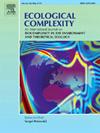网络分析揭示了人类作为顶级捕食者和墨鱼在海洋保护区食物网结构中的关键作用(Arrábida自然公园)
IF 3.1
3区 环境科学与生态学
Q2 ECOLOGY
引用次数: 0
摘要
Arrábida自然公园的海洋保护区(MPA)是生物多样性的中纬度热点。为了解该生态系统的营养结构,构建了一个由884个分类群组成的高度定义的食物网网络。网络分析显示,人类是顶级捕食者,还有各种海鸟、海豚和鲨鱼。该网以中间物种为主,其总体组织遵循先前报道的其他海洋和沿海生态系统的模式。导航员波利比乌斯(Polybius navigator)和黄绿波利比乌斯(Polybius henslowii)这两种游泳蟹由于其在网络中的高度连通性,在中等营养水平的消费者和猎物中扮演着重要的角色。乌贼(Sepia officinalis)是一种具有高商业价值的头足类动物,在这个网络中扮演着最关键的角色,因为它是猎物数量最多的物种,也是十大联系最紧密的物种之一(与其他物种的联系更多)。此外,墨鱼是最短路径长度的物种之一,即连接到其他物种的链路数量最少。由于这种头足类动物具有高度的流动性,并将其领土扩展到MPA之外的佐渡河口,在那里它是当地渔业的主要目标,并暴露于各种污染源,密切监测当地的乌贼种群是至关重要的,不仅在Arrábida MPA,而且在邻近的佐渡河口。本文章由计算机程序翻译,如有差异,请以英文原文为准。

Network analysis reveals humans as top predators and the key role of cuttlefish in the food web structure of a marine protected area (Arrábida Natural Park)
The marine protected area (MPA) of the Arrábida Natural Park is a mid-latitude hotspot for biodiversity. To understand its trophic structure, a highly defined food web network was assembled for this ecosystem, consisting of 884 taxa. Network analysis showed that humans are the top predators, as well as various seabirds, dolphins and sharks. This web is dominated by intermediate species, and its general organization follows previously reported patterns for other marine and coastal ecosystems. Two swimming crabs, Polybius navigator and Polybius henslowii, assume important roles as mid-trophic level consumers and prey, due to their high connectivity in the network. The cuttlefish, Sepia officinalis, a cephalopod of high commercial value, assumes the most pivotal role in the network, as it is the species with the highest number of prey and is among the top 10 most highly connected species (with more links to other species). Additionally, the cuttlefish is among the species with shortest path length, that is the lowest number of links connecting it to any other species. Since, this cephalopod is highly mobile and extends its territory outside the MPA, into the Sado estuary, where it is the main target of local fisheries, and is exposed to various pollution sources, close monitoring the local population of cuttlefish is of the utmost importance, not only in the Arrábida MPA but also in the adjacent Sado estuary.
求助全文
通过发布文献求助,成功后即可免费获取论文全文。
去求助
来源期刊

Ecological Complexity
环境科学-生态学
CiteScore
7.10
自引率
0.00%
发文量
24
审稿时长
3 months
期刊介绍:
Ecological Complexity is an international journal devoted to the publication of high quality, peer-reviewed articles on all aspects of biocomplexity in the environment, theoretical ecology, and special issues on topics of current interest. The scope of the journal is wide and interdisciplinary with an integrated and quantitative approach. The journal particularly encourages submission of papers that integrate natural and social processes at appropriately broad spatio-temporal scales.
Ecological Complexity will publish research into the following areas:
• All aspects of biocomplexity in the environment and theoretical ecology
• Ecosystems and biospheres as complex adaptive systems
• Self-organization of spatially extended ecosystems
• Emergent properties and structures of complex ecosystems
• Ecological pattern formation in space and time
• The role of biophysical constraints and evolutionary attractors on species assemblages
• Ecological scaling (scale invariance, scale covariance and across scale dynamics), allometry, and hierarchy theory
• Ecological topology and networks
• Studies towards an ecology of complex systems
• Complex systems approaches for the study of dynamic human-environment interactions
• Using knowledge of nonlinear phenomena to better guide policy development for adaptation strategies and mitigation to environmental change
• New tools and methods for studying ecological complexity
 求助内容:
求助内容: 应助结果提醒方式:
应助结果提醒方式:


